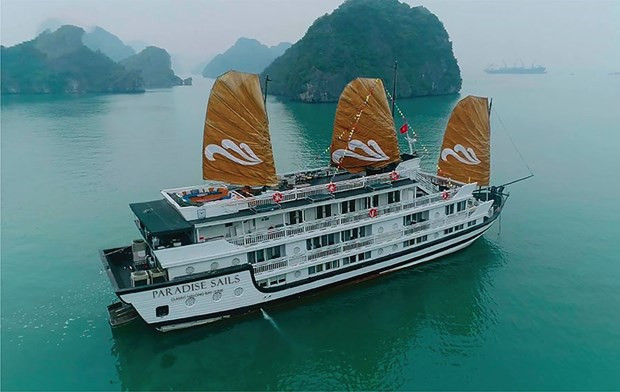
Chairman of the Vietnam Tourism Association Vu The Binh said that the tourism development strategy and planning to 2020, with a vision to 2030, sets a goal that revenue from cultural tourism will account for 15-20% of the total 40 billion USD revenue from tourists by 2030.
According to Binh, Vietnam has pinned high hopes on the development of cultural tourism based on its diverse, rich and unique cultural resources spanning all regions of the country. Statistics show that there are about 40,000 relic sites across the country, of which 3,460 are ranked at the national level, 107 are recognised as special national sites, and 164 are on the list of national treasures.
It is noteworthy that the demand to learn about the indigenous culture of both domestic and international tourists is increasing. Therefore, localities across the nation have taken various measures to make use of the cultural and historical values of this relic system, and it can be affirmed that culture is always an important part of many economic sectors, including tourism, stated Binh.
Deputy General Director of the Vietnam National Administration of Tourism (VNAT) under the Ministry of Culture, Sports and Tourism Pham Van Thuy said that tourism and culture are always closely linked, thereby creating many attractive products. However, at present, the development of cultural tourism is not commensurate with the potential and advantages of culture.
[Cultural value a great resource for tourism development]
Therefore, the promotion of cultural tourism will be the core solution, with the focus of contributing to promoting tourism development in a sustainable way, Thuy stated. He stressed the need to associate culture with tourism development, as if businesses only focus on economic profits, but forget about the cultural factor, it will gradually affect the long-term future of the country, and the living environment as well.
Foreign tourists favour cultural tourism in Vietnam
After the COVID-19 pandemic, tourism demand for interacting with the local community, and discovering indigenous culture and products is on the rise. With this type of tourism, instead of enjoying services at resorts, they prefer to explore the local culture; experience farming; grow vegetables with locals; go fishing, camping and kayaking; or making pottery.
To meet the needs of tourists, travel and tourism agencies have built many attractive and quality tourism products, contributing to promoting the cultural, culinary and scenic features of many destinations.
As a locality boasting two cultural heritage sites of the world, namely Hoi An and My Son Sanctuary, the central province of Quang Nam is one of Vietnam’s most attractive destinations for foreign holidaymakers.
Last year, the World Travel Awards announced the 2022 winner for Asia's Leading Cultural City Destination as Hoi An, which proved the soundness of the ancient city’s direction of taking culture as the core in the socio-economic development cause.
In 2023, Quang Nam province issued a plan to attract and welcome international tourists in a new period, with focus on building new tourism products based on national cultural values and natural resources in each region and each locality./. VNA